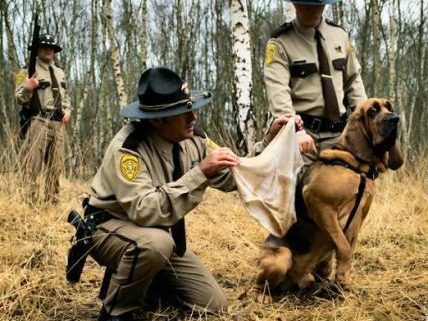Homicide Investigations: Do’s and Don’t’s
“To Protect and Preserve.” Those are the words that should be on the mind of every officer who responds to the scene of a homicide.
First responders have an immense responsibility. Not only do they have to assess the situation in a hurry—the victim may still be alive—-, the possibility of the killer still being on scene is quite probable. And, those officers must realize that the key to solving the case—evidence—must be protected. So, while facing the threat of personal harm and saving the life of others, patrol officers practically need to step through the scene as if walking on eggshells. That’s not asking too much of them, right?
Keep in mind, there’s no set-in-stone method of investigating a murder, because no two scenes are identical. And, no two officers/crime scene investigators think exactly alike. However, there are certain things that must be done, and there are mistakes that must not me made. Here are a few pointers.
The Do’s
1. First responders must proceed to the scene as quickly and safely as possible. Why? Possibly catch the bad guy and to prevent the destruction/removal of evidence.
2. Quickly start the crime-solving wheels in motion by contacting the necessary parties, such as investigators, coroner, EMS, etc.
3. Arrest the suspect, if possible.
4. Document EVERYTHING.
5. Preserve and collect evidence.
6. Assume that EVERYTHING is potential evidence.
7. Secure the scene. Absolutely no one is allowed to enter who’s not a key person in the investigation.
8. Treat every single suspicious death as a homicide until the investigation proves otherwise.
9. Keep an open mind.
10. Photograph, photograph, photograph!
11. Study the victim. Learn everything there is to know about them. Know them. Know what they ate, what they liked to do, where they liked to go, who they liked and disliked, who liked them and who hated them, etc. Uncover every single detail of their life. The victim is often the single most important piece of evidence in the case.
12. Share information with members of your investigative team. Bounce thoughts and ideas around among the group. Talk to everyone involved—patrol officers on the scene, the coroner, other investigators, the crime scene techs, etc.
The Don’t’s
1. Do not assume anything. Sure, the call came in as a suicide, but that doesn’t mean that’s what actually happened. That’s merely what a witness told the dispatcher. And definitely do not assume there are no weapons present at the scene simply because that’s what your dispatcher told you. Again, he/she was given that information by someone at the scene who may not know.
2. Do not assume the suspect has left the scene. Treat everyone there as a possible murderer until you learn differently. Be smart and be safe.
3. Do not allow anyone to leave the area until you’ve interviewed them. Treat everyone as a possible witness. Sometimes people don’t realize they’ve seen an important detail.
4. Failing to secure a scene. Family members have a tendency to get in the way. They feel the need to be a part of the scene. They want answers. However, absolutely do not allow anyone inside the scene. This includes members of the police department if they’re not part of the investigation. And I mean everyone, including the mayor, the chief, the sheriff, etc. (The last one’s easier said than done, right deputies?).
5. Releasing information to the media. Hold your cards close to your chest until you have an idea of what information can be released to the public. Remember, what you say will be on the evening news!
6. Don’t get a case of tunnelvision. Keep your mind open to everything, at first. Then as the case starts to come together, the focus of the investigation will narrow. A murder investigation works like a funnel. First you dump all you’ve found into the large end. Then you keep pushing and pushing until finally the killer’s name pops out of the other, smaller end.
7. Failing to take enough notes and photographs. You only have one shot at this, so take more than you need while the scene is still intact. There are no do-overs.
8. Don’t take sloppy notes and keep sloppy records. Remember, what you write down could/will eventually be seen in court. And that will be a reflection of how the investigation was conducted. Clean notes = a clean, tight investigation.
9. Don’t discuss a case where members of the general public have an opportunity to hear the conversation! Words are too easy to misunderstand and that can come back to bite a detective in the…well, a place where the sun doesn’t shine. Think about it… A trial witness says, “Yes, I heard the detective say…”
10. Again, a case is not a suicide until the investigation proves it is. How many murderers have “gotten away with it” because of lazy officers conducting slipshod investigations? Sure, it’s easy to take a peek at a victim and assume suicide. But every case should warrant a closer look. You never know, especially if the circumstances are suspicious. And never discount that detective’s “gut feeling,” the investigator’s 6th sense.
11. Do not rush into a crime scene without first taking everything in. Take a moment to assess the area. Are there any dangers, including hidden ones, such as gas leaks, poisonous chemicals, A KILLER WITH A GUN?
12. Don’t assume the victim is dead. Check for vital signs. You certainly don’t want him to lie there suffering while you stand around waiting for the coroner. A few seconds could be the difference between life and death.
13. Don’t assume that the cooperative witness with the happy face is innocent. He could very well be the killer. If so, arrest that clown!





